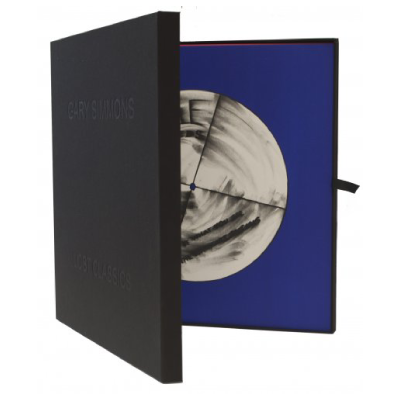
Details
Artist
Styles
C-print on Kodak Professional paper - signed and numbered on the back // Performance 2003 by Hermann Nitsch is a visceral photographic capture that exemplifies his provocative and challenging approach to art. Known for his association with the Viennese Actionism movement, Nitsch's work often confronts themes of life, death, sacrifice, and ritual. This photograph, part of a series documenting his performances, depicts a table covered in raw, visceral materials—fish, organs, and a profusion of red fluids resembling blood, spilling over the tablecloth. The imagery evokes sacrificial rites and visceral intensity, challenging viewers to confront primal and uncomfortable aspects of human existence. Nitsch's work invites contemplation on ritual, corporeality, and the boundaries of art.
Performance 2003, 2003
form
Medium
Size
20.5 x 30.5 cm
- Inches
- Centimeters
Edition
Price
- USD
- EUR
- GBP
Details
Artist
Styles
C-print on Kodak Professional paper - signed and numbered on the back // Performance 2003 by Hermann Nitsch is a visceral photographic capture that exemplifies his provocative and challenging approach to art. Known for his association with the Viennese Actionism movement, Nitsch's work often confronts themes of life, death, sacrifice, and ritual. This photograph, part of a series documenting his performances, depicts a table covered in raw, visceral materials—fish, organs, and a profusion of red fluids resembling blood, spilling over the tablecloth. The imagery evokes sacrificial rites and visceral intensity, challenging viewers to confront primal and uncomfortable aspects of human existence. Nitsch's work invites contemplation on ritual, corporeality, and the boundaries of art.
- Recently Added
- Price (low-high )
- Price (high-low )
- Year (low-high )
- Year (high-low )
Hermann Nitsch
Das Sechstagespiel Des Orgien Mysterien Theaters, 1998
Limited Edition Print
Etching
EUR 1,750
What is Sound Art?
Sound Art is an artistic discipline where sound is used as the primary medium. Like other contemporary art genres, Sound Art is inherently interdisciplinary, engaging with a variety of subjects including electronics, acoustics, noise music, psychoacoustics, audio media, video, film, and sculpture. Early examples of Sound Art include Luigi Russolo's noise intoners, as well as experimental works by Surrealists, Dadaists, and the Fluxus movement. These early pioneers helped establish sound as a legitimate medium for artistic expression.


























